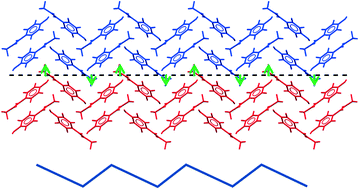Using topological analysis to predict tabletability
A newly published paper from the Cambridge Crystallographic Data Centre reports ADDoPT-supported work to develop simple, programmatically generated, topology-based descriptors of crystal structures for application to mechanical properties prediction methods.

A simple, automatic hydrogen-bond network dimensionality analysis method has also been developed which, when used in conjunction with the slip plane analysis, can detect whether the proposed slip plane is bridged by hydrogen bonding interactions. These methods are combined with other calculated topological features into a set of crystal structure descriptors, which provide a fast, qualitative way to describe the aspect of crystal plasticity that results from packing geometry. While intended for use in conjunction with other methods, these descriptors alone have been shown to correctly predict the relative tabletability measured for multiple drug systems.
For further information on this work, please contact Mat Bryant at CCDC.